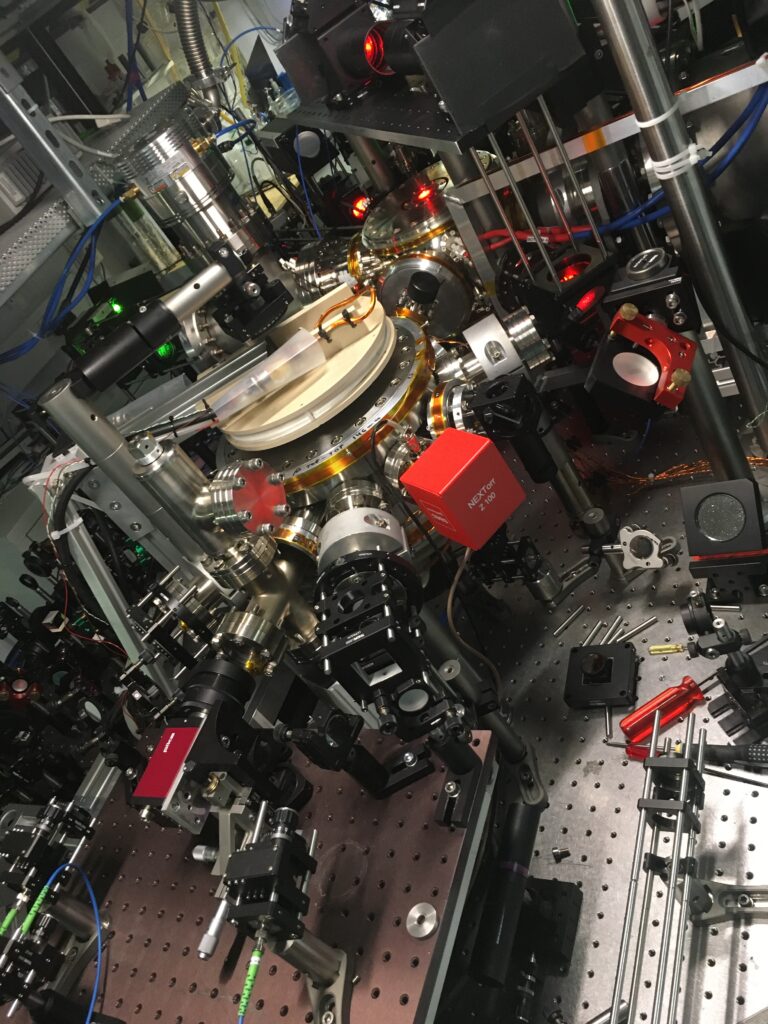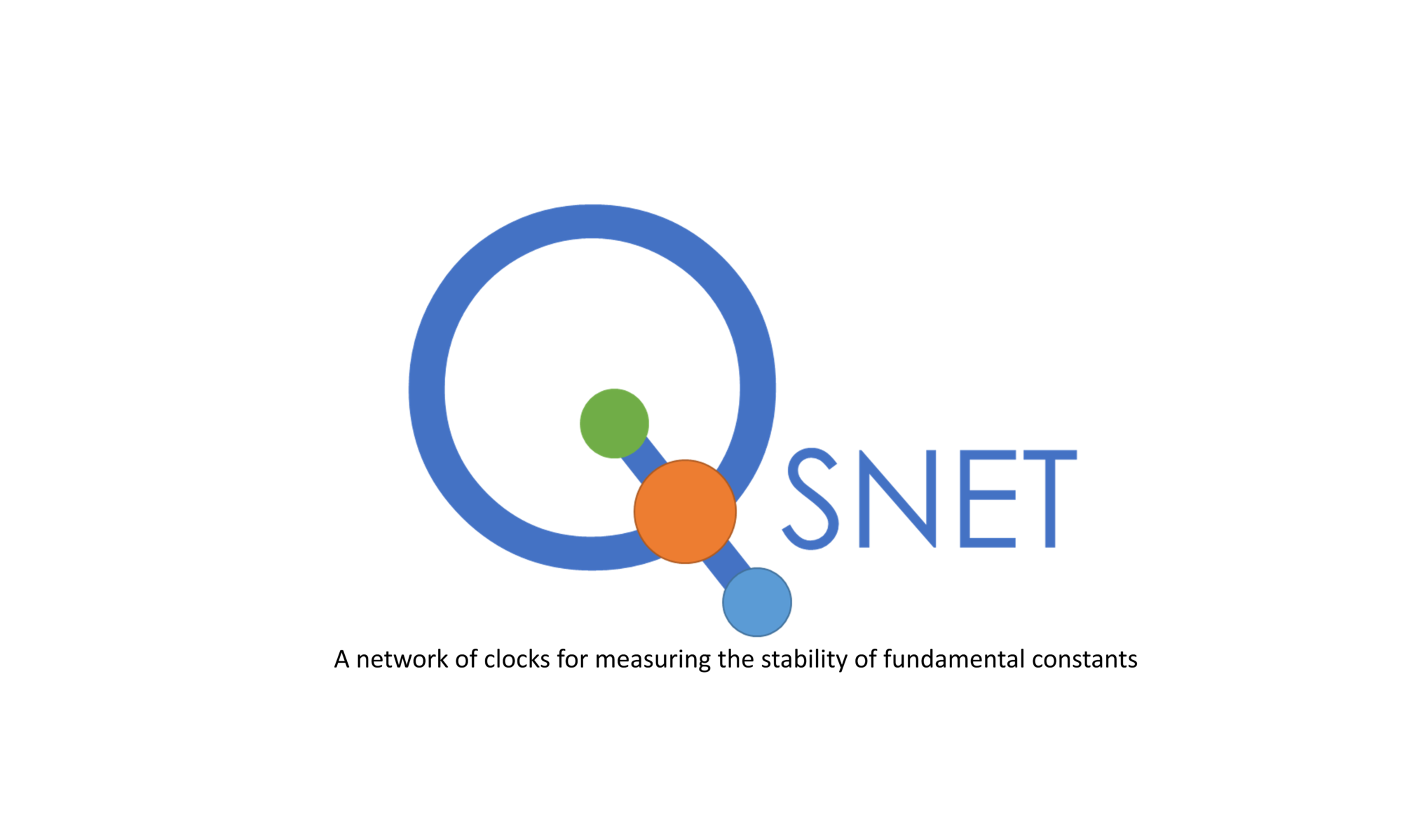CaF Clock
In the frame of the QSNET project, the team of experimental physicists at Imperial College’s Centre for Cold Matter is setting up a molecular lattice clock to measure time variation of the proton-to-electron mass ratio. The clock will be based on the fundamental vibrational transition in Calcium Monofluoride, which has a frequency of 17.472 THz. The transition is expected to have a sub-Hz linewidth and be largely insensitive to systematic DC Stark or Zeeman shifts. Additionally, the AC Stark shifts of the ground and excited states of the clock transition cancel for several wavelengths, facilitating the trapping of the molecules in a magic wavelength lattice. To prepare the molecules for loading into such a lattice they will be pre-cooled in a magneto optical trap and subsequently sub-doppler cooled to microkelvin temperatures. In the lattice, the clock transition will be coherently interrogated with a pair of Raman lasers each locked to the same high-finesse cavity for frequency stability. In this configuration it will be possible to drive the clock transition with coherence times in the order of a second and to conduct a sensitive search for time variation of the proton-to-electron mass ratio.

